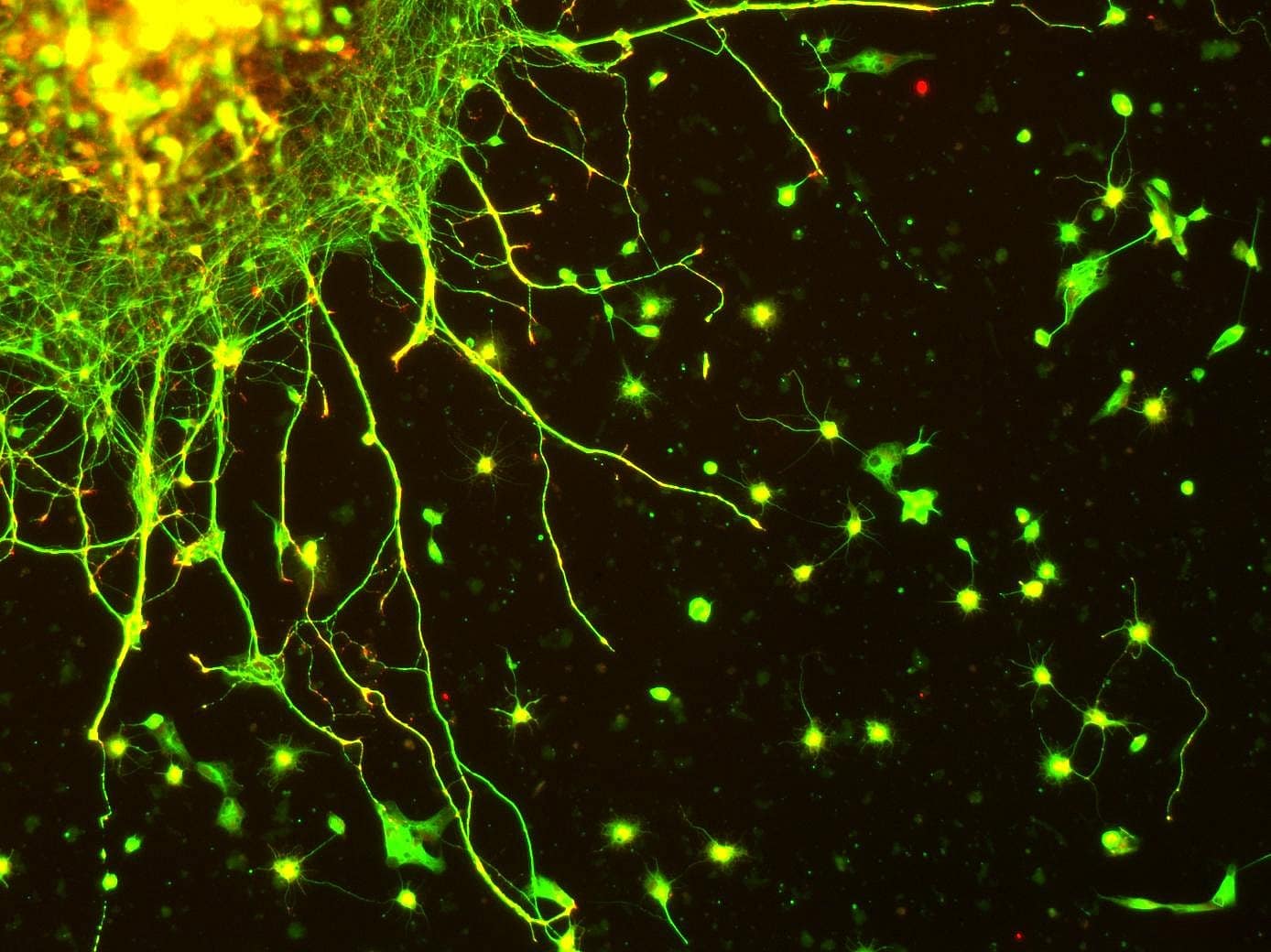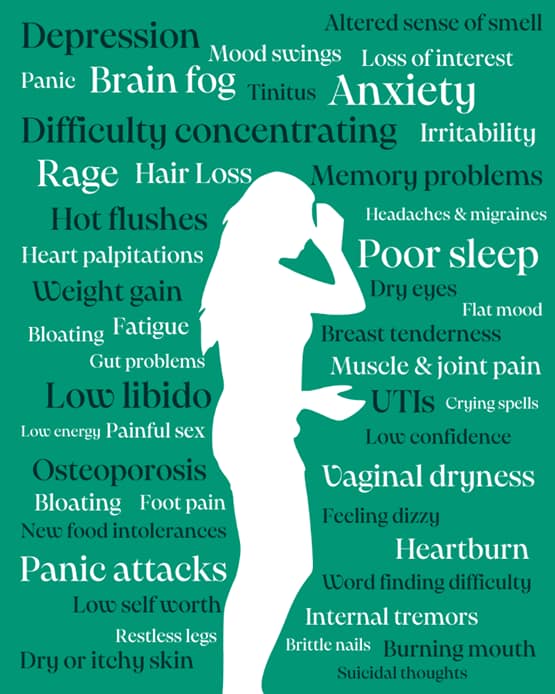
ADHD is not simply due to a shortage in dopamine
Attention Deficit Hyperactivity Disorder (ADHD) is a neurodevelopmental disorder characterized by poor impulse control and an impaired regulation of attention. A common thought is that ADHD is caused by a shortage of dopamine, one of the major neurotransmitters in the brain. We recently conducted a survey to test people’s knowledge of ADHD (unpublished work). The majority of the 225 participants either was not sure whether ADHD is caused by a shortage in dopamine (59%) or believed this was true (13%). In this blog post, I will explain why this is a misconception and explain the actual role of dopamine in ADHD.
The misconception likely stems from limitations of studies in the early days of neuroimaging research (see Arnsten & Pliszka, 2011). At this time, Positron Emission Tomography (PET) studies allowed researchers to visualize the presence of dopamine in the midbrain, but no other neurotransmitters or brain areas. This research pointed to reduced levels of dopamine in the midbrain of individuals with ADHD. Further, early work in rat models of ADHD demonstrated that high doses of stimulant ADHD medication resulted in pronounced increases of dopamine release in the entire brain.
“This was interpreted as evidence for a shortage of dopamine in ADHD, and became known as the ‘hypodopaminergic state hypothesis’ of ADHD.”
A disorder that is unequivocally caused by a shortage of dopamine is Parkinson’s Disease (PD). PD is due to a progressive loss of dopamine-producing cells in the midbrain, which results in motor symptoms such as slowness of movement, tremor, and rigidity, as well as cognitive impairments, including deficits in executive functioning, attention, memory, and visuospatial functioning (Koerts et al., 2009; 2012). These motor symptoms and cognitive impairments become worse over time. Importantly, ADHD has a very different clinical presentation.
“This already insinuates that the hypodopaminergic state hypothesis cannot be true.”
Another interesting way to formally test the hypodopaminergic state hypothesis of ADHD is by examining the frequency of spontaneous eye blinks. Early work in non-human primates demonstrated that dopamine-stimulating medications produce increases in blink rate whereas dopamine-inhibiting medications produce decreases in blink rate (see Groen et al., 2015). Further, patients with PD have two times lower blink rates than healthy individuals (Deuschl & Goddemeier, 1998). Sometimes they even suffer from medical eye problems because their eyes are no longer sufficiently protected from dehydration and filth.Spontaneous blink rate can thus be regarded as a reliable marker of the integrity of the dopamine system in the brain. We recently examined spontaneous eye blink rates in children with ADHD (Groen et al., 2015) and in contrast to the hypodopaminergic state hypothesis we found no reductions; neither did previous studies. Therefore, if it exists, the hypodopaminergic state in ADHD thus is much less pronounced than in for example PD.
The current ‘revisited’ dopamine hypothesis of ADHD holds that the transmission of dopamine between neurons as especially reduced in the prefrontal brain (see Arnsten & Pliszka, 2011; Levy & Swanson, 2001). This brain area is responsible for the regulation of actions, attention, and emotions, and ultimately for goal-directed behavior. Metaphorically speaking, one could compare the prefrontal brain to the conductor of an orchestra, who regulates the musicians who are responsible for actions, attention, and emotions. The reduction in neural transmission is due to malfunctioning dopamine transporters and receptors in this area, which has been demonstrated by research using more refined PET techniques as well as genetic and pharmacological approaches.
“So it is not a lack of dopamine causing ADHD, but rather a reduced neural transmission of dopamine in the prefrontal brain.”
However, this is only half of the story because there is another major neurotransmitter that, in concert with dopamine, is responsible for optimal functioning of the prefrontal brain: noradrenaline (Arnsten & Pliszka, 2011).
“Due to reduced neural transmission of both dopamine and noradrenaline, the prefrontal brain of individuals with ADHD is generally ‘under stimulated’ or ‘under aroused’.”
This might sound counterintuitive as individuals with ADHD often appear over active, but ‘under arousal’ of the prefrontal brain leads to unguided actions, attention, and emotions. Metaphorically speaking, the conductor of the orchestra is ‘lazy’, so that actions, attention or emotions can easily take the lead and get out of control. This ‘under stimulation’ explains why taking low doses of ‘stimulant’ ADHD medication (such as methylphenidate) improve symptoms of ADHD. This type of medication optimizes the prefrontal neural transmission in individuals with ADHD by targeting the dopamine and noradrenaline transporters. The brain mechanisms of ADHD are therefore much more complex than simply a shortage in dopamine.
References
Arnsten, A.F.T., & Pliszka, S.R. (2011). Catecholamine influences on prefrontal cortical function: Relevance to treatment of attention deficit/hyperactivity disorder and related disorders. Pharmacology Biochemistry and Behavior, 99, 211-216.
Deuschl, G., & Goddemeier, C. (1998). Spontaneous and reflex activity of facial muscles in dystonia, Parkinson’s disease, and in normal subjects. Journal of Neurology, Neurosurgery and Psychiatry, 64, 320-324.
Groen, Y., Börger, N.A., Koerts, J., Thome J., & Tucha O. (online first 2015). Blink rate and blink timing in children with ADHD and the influence of stimulant medication. Journal of Neural Transmission, DOI 10.1007/s00702-015-1457-6.
Koerts, J., Leenders, K.L. & Brouwer, W.H. (2009). Cognitive dysfunction in Parkinson’s disease: Automatic and controlled behavior. Cortex, 45, 922-929.
Koerts, J., Van Beilen, M., Leenders, K.L., Brouwer, W.H., Tucha, L. & Tucha, O. (2012). Complaints about impairments in executive functions in Parkinson’s disease: The association with neuropsychological assessment. Parkinsonism and Related Disorders, 18, 194-197.
Levy, F. & Swanson, J.M. (2001). Timing, space and ADHD: The dopamine theory revisited. Australian and New Zealand Journal of Psychiatry, 35, 504-511.




Thanks, I can imagine that there are many misunderstandings about dopamine, which is also often called the “happiness hormone” (just like serotonin, by the way).
When I read in your introductory sentence that ADHD is a “neurodevelopmental disorder characterized by poor impulse control and an impaired regulation of attention” I would like to think a step further: How do we know that it is a neurodevelopmental disorder, rather than, say, a behavioral disorder?
If impaired control and attention characterize it, this may be a better alternative, for how do we measure control and attention ultimately? In behavior, of course.
Thanks Stephan fort his relevant question that could be worth another blog post. I will try to give a brief answer here.
In psychiatry it has been generally accepted that ADHD is a neurodevelopmental disorder, which is a group of conditions with onset in the developmental period, often before or during grade school (see DSM-5: http://proxy-ub.rug.nl/login?url=http://dx.doi.org/10.1176/appi.books.9780890425596.dsm01).
However, the diagnosis is still made purely on behaviour descriptions (a certain number of 18 behaviour symptoms should be met for the diagnosis).
Neuropsychology has tried to identify neurocognitive markers for ADHD, and indeed found impairments in for example response inhibition, selective attention, short term and working memory, cognitive control, and reward sensitivity. None of these markers, however, is affected in all children with ADHD, or is specific for ADHD, or can be used in isolation to diagnose ADHD. Importantly, this also applies to the 18 behaviour symptoms of ADHD: none of the symptoms is affected in all children with ADHD, or is specific for ADHD, or can be used in isolation to diagnose ADHD.
These neurocognitive markers are measured by performance on cognitive tests (= behaviour) that are known to correlate to specific brain activity or brain dysfunction. In addition, efforts are being made to identify specific brain activity patterns that are altered in ADHD.
I do not believe that in future these neurocognitive measures can replace the diagnosis based on behaviour descriptions. However, a combination of neurocognitive markers, i.e. a neurocognitive profile, might assist in making a prognosis for ADHD, e.g. whether the child will outgrow ADHD or whether medication treatment is useful. For now, in clinical practice neurocognitive profiles are only used to describe the strengths and weaknesses of a child with ADHD.
The problem already shows in the opening sentence: ‘Attention Deficit Hyperactivity Disorder (ADHD) is a neurodevelopmental disorder characterized by poor impulse control and an impaired regulation of attention’.
The proper way of phrasing it is: ‘Poor impulse control and an impaired regulation of attention have been framed as the mental disorder called ‘Attention Deficit Hyperactivity Disorder (ADHD)’.
Defining particular characteristics as a mental disorder is not a neutral description of these characteristics but adds something to them. It may be a good idea to do this in particular cases. However, if researchers keep on suggesting that they talk on behalf of nature (which such opening sentences do) we can’t even ask the question whether or not it always is a good idea.
This very common but reïfying way of phrasing is hiding definitions. And that is quite undemocratic if not unscientific as well.
We frame symptoms all the time really and science and democracy for that matter often rely on it. Flu virus strains may differ and not all fugitives are the same, yet we need labels to address problems and consequences.
ADHD is still a group of characteristics investigated and the label helps in communication. That said as Yvonne points out neural and psychiatric evidence is slowly completing the picture. It is discarding the empirical evidence that is truly unscientific.
No one suggested discarding the empirical evidence, as far as I can see. And from what Yvonne wrote I don’t get the impression that “neural and psychiatric evidence is slowly completing the picture”. Yvonne wrote: “None of these markers, however, is affected in all children with ADHD, or is specific for ADHD, or can be used in isolation to diagnose ADHD. Importantly, this also applies to the 18 behaviour symptoms of ADHD: none of the symptoms is affected in all children with ADHD, or is specific for ADHD, or can be used in isolation to diagnose ADHD.” That suggests to me that both the picture and the markers are fuzzy, and the relation between the two rather loose.
@maarten Then you obviously missed second paragraph “The misconception likely stems from limitations of studies in the early days of neuroimaging research (see Arnsten & Pliszka, 2011).” As science develops our understanding of ADHD develops. But your right, considering your point of view science can be fuzzy and loose sometimes. New fields like quantum psychology only give you a little insight as to how complex the brain really is.
1. Have there not been studies comparing prefrontal cortical activity during cognitive tests in children from differing and young age groups corrected for SES etc?
2. Would a positive outcome (as in: reduced pfc activity in children with severe behavioral symptoms but not in controls) negate the discussion between the Stephan and Yvonne?
@Sebastiaan:
1. Many neuroscience articles pointed to reduced activation of brain networks involved in behavior regulation (for example error processing or inhibition) in children with ADHD. These reduced activations are also related to both cognitive task performance and behavior symptoms of ADHD, e.g. http://ajp.psychiatryonline.org/doi/10.1176/appi.ajp.2014.13121635
2. As I understood it correctly, the criticism by Trudy and Stephan is that these studies are based on groups and that not all individuals who are clinically diagnosed as having ADHD *by behavior descriptions*, actually have such reduced activation pattern; They say that since the clinical diagnosis is not made by brain scans or neuropsychological tests we should not define it as a ‘neurodevelopmental disorder’. The DSM-5 however does so.
@Maarten:
ADHD is known as a heterogeneous disorder by definition and neuropsychological theory explains this by (at least) three pathways in the brain that could independently or in combination lead to similar ADHD behavior characteristics, e.g. http://www.sciencedirect.com/science/article/pii/S0890856710000742
I do foresee a future in which neuropsychology will play a larger role in ADHD assessment, but this all depends on the validation of normative tests that are easy to apply in clinical practice.
@yvonne, with regards to your last paragraph, I cannot wait to see what’s coming because it will be better than what we have now, that is for sure 🙂 right?
You text includes citations in quotes (italics and larger font) but I see no reference to whom the quoted speaker is. Please respond.
The quotes are by the author, I believe.
_tassos
True, this is just the lay-out of Mindwise. It is not a quotation, just a highlight from the text written by the author.